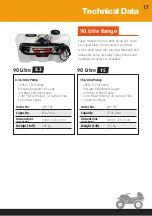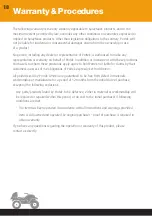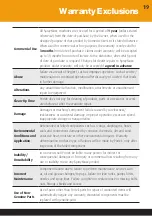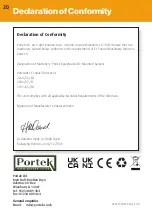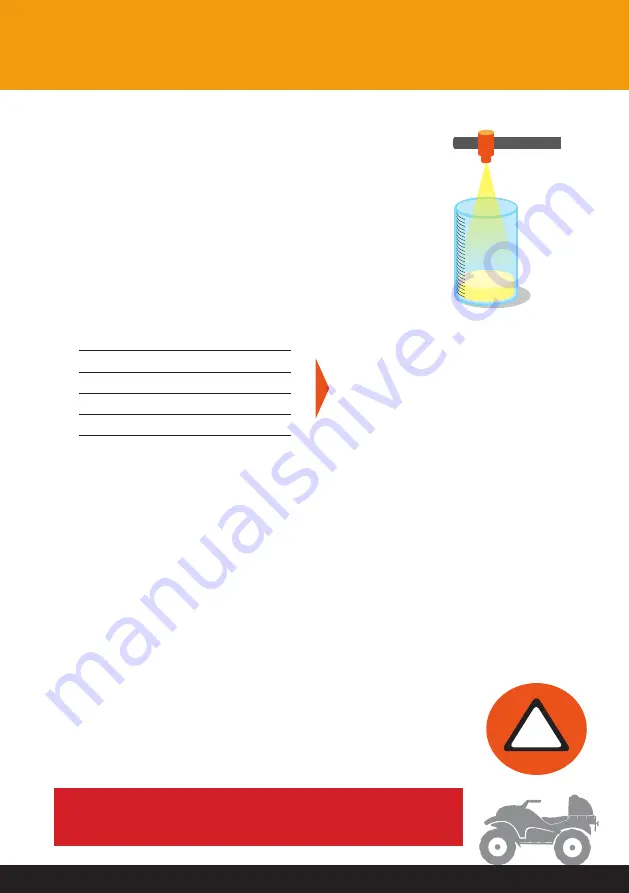
9
4. Set Correct Spraying Pressure:
With the sprayer
parked and the pump running, set the ideal or
intended pressure.
REFER TO CHEMICAL SUPPLIER
5. Catch Output From Each Nozzle:
Catch the fluid
output in a container (marked in oz) for the
same number of seconds it took to drive the measured
distance in step 3 (42 seconds).
Calculate the ‘average nozzle output’ by adding the individual
outputs and then dividing by the number of nozzles tested.
6. Analyse Results:
The amount of liquid captured per nozzle equals the gallons per acre
application rate. (example: 16 gallons per acre).
7. Clean Nozzles:
If the output of any nozzle deviates from the manufacturers’
guidelines by more than 10%, the nozzle should be replaced or cleaned. A toothbrush
works perfectly for this task.
8. Compare Recommended Rate:
If the 1 gallon per acre rate is not within 5%
of the intended rate, you will have to adjust the pressure you spray at or the speed you
travel. You will have to repeat steps 3 - 7.
Calibration
Nozzle 1
16.5 oz
Nozzle 2
16.3 oz
Nozzle 3
15.9 oz
Nozzle 4
15.3 oz
Total =
64.0 oz
64 ounces divided by 4 nozzles =
16 gallons per acre.
At this point
only
can the figure be
converted to metric equivalent
eg. 72.3 litres
NOTE: This is only a basic guide on how to set up the
calibration for your sprayer, there are many factors to
consider when doing this process, we recommend you
research the best calibration for the sprayer, the application
and
choice of chemical
to be used before each use.
ALWAYS REFER TO THE CHEMICAL
MANUFACTURERS' TECHNICAL INFORMATION
!
Nozzle 1

















